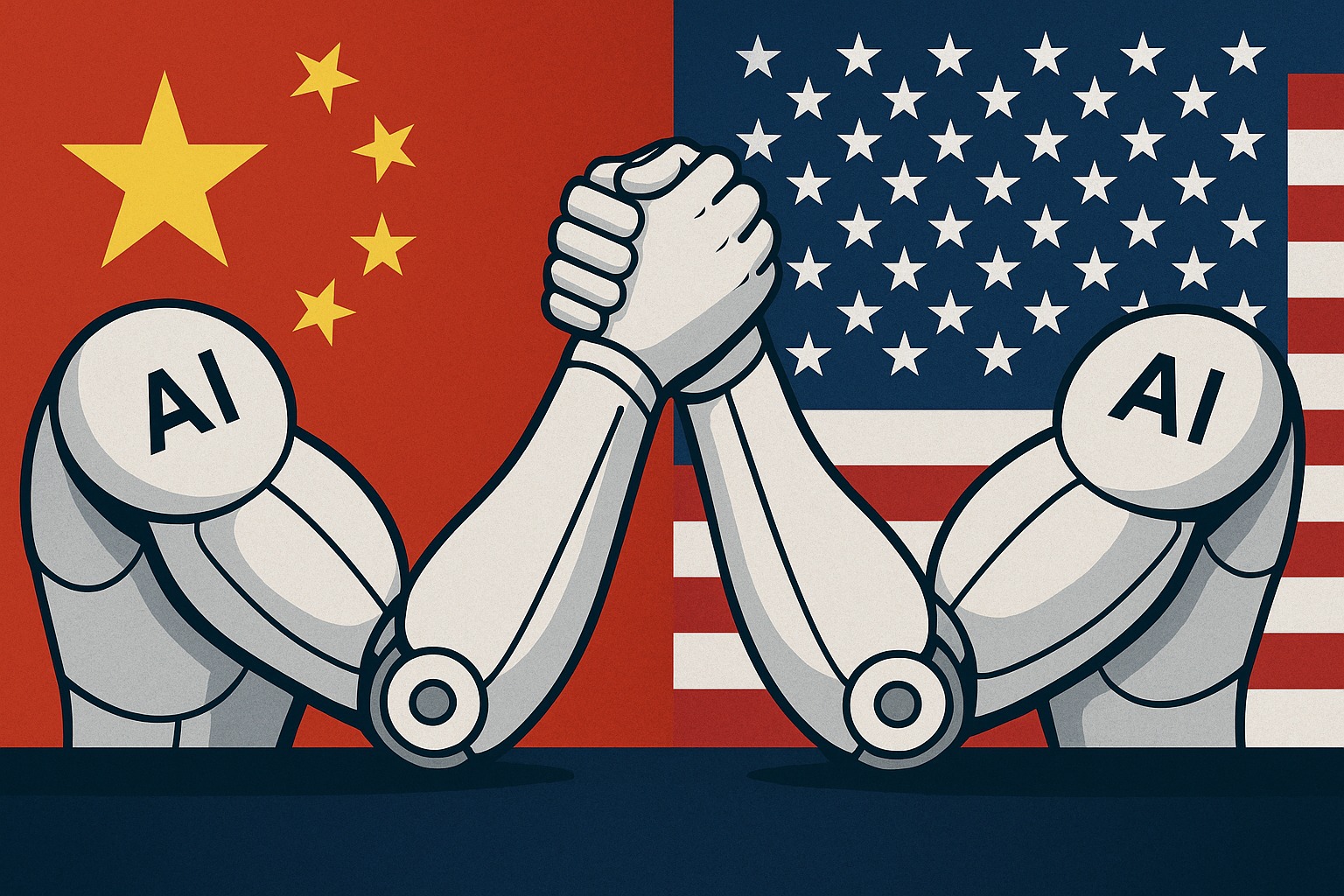The United States and China are engaged in a close, multi-dimensional race for leadership in artificial intelligence. What began as a competition in model performance has broadened into a contest spanning hardware, data access, regulation, and global influence. While the U.S. maintains an edge in frontier innovation, China is narrowing the gap through scale, state investment, and rapid commercialization.
Current State of the Race
| Indicator | United States | China |
|---|---|---|
| Pioneering Innovation | Leads in developing frontier models, producing 40 notable AI systems in 2024 compared with China’s 15. U.S. dominance stems from firms such as OpenAI, Google, Anthropic, and xAI. | Rapidly improving in model quality and cost efficiency. The performance gap narrowed to near parity by late 2024. DeepSeek and Baidu’s Ernie 4.0 are notable examples. |
| Model Strategy | Prioritizes proprietary, closed-source architectures and commercial licensing. | Favors open-weight and open-source releases, enabling broad developer adoption and compensating for limited chip access. |
| Investment | Private AI investment reached $109 billion in 2024, 12 times China’s $9 billion. Most funding targets generative AI. | Government-orchestrated initiatives and public-private programs are projected to exceed $100 billion in 2025. |
| Talent Pool | Attracts top global researchers; 57 percent of elite AI scientists worked in the U.S. as of 2022. | Produces far more domestic STEM graduates but faces challenges in recruiting foreign experts. |
| Hardware | Retains a decisive lead through access to Nvidia and other advanced chips. | Restricted by U.S. export controls, yet accelerating domestic chip efforts such as CANN and Biren. |
| Data Access | Benefits from vast commercial data but operates under privacy constraints. | Collects and controls massive volumes of data from 1.4 billion citizens with fewer legal limitations. |
| Regulation | Moving toward tighter government oversight, including export controls and investment restrictions. | Uses a state-directed model prioritizing national control and domestic innovation. |
Broader Implications
- Geopolitical and Military Impact
AI now shapes defense modernization, cyber operations, and intelligence analysis. China’s military-civil fusion accelerates dual-use AI integration, while U.S. programs expand under DARPA and AUKUS. The lack of shared governance raises risks of escalation through algorithmic error or misjudgment. - Decoupling and Fragmentation
Each side is pursuing independence across semiconductors, data centers, and software ecosystems. Fragmentation may slow collaboration and complicate international AI safety standards. - Influence in Emerging Markets
China’s low-cost open-source tools are gaining ground in emerging economies. U.S. export controls and licensing barriers risk pushing these markets toward Chinese alternatives, reshaping global AI alignment. - Corporate Exposure
Enterprises are treating AI dependencies as a new form of supply-chain risk. Model origin, compute location, and data flows now carry compliance and geopolitical implications that require board-level oversight.
Strategic Outlook
Over the next two years, the U.S.–China AI competition will be defined by commercial execution, capital allocation, and hardware access—not by long-term AGI speculation. The outcome for business leaders will hinge on who can turn research leadership into repeatable enterprise value: faster deployment cycles, region-specific compliance frameworks, and reliable compute capacity.
For now, the race remains economic, not existential.
The broader “AI arms race” and its implications for AGI and ASI will be explored in the next issue.
Next Issue: LensView Issue 35 – “AGI, ASI, and the Next Deterrence Era”








